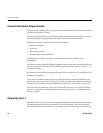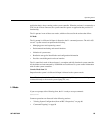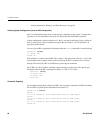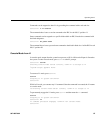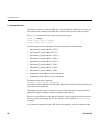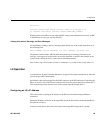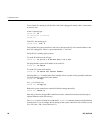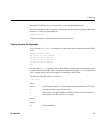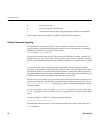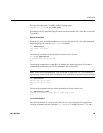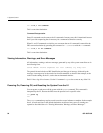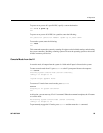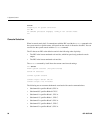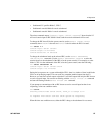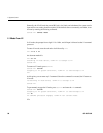
92 007-4857-002
4: System Control
b is the enclosure type.
ss is the slot location of the enclosure.
p is the partition of the enclosure (not present if the system is not partitioned).
In the example shown above, 001c01 is an IRU in rack 001 and slot position 01.
Setting Command Targeting
If a command is not understood by the L2 system controller, in general it is passed to the L1
system controllers. The destination determines which L1s receive the command. A destination,
specified by the following, is a range of racks and slots:
rack <rack list> slot <slot list>
The <rack list> specifies a list of racks. This can be a list delimited by commas, such that 2,4,7
specifies racks 2, 4, and 7. You can use a dash to specify a range of racks, such that 2-4 specifies
racks 2, 3, and 4. Both nomenclatures can be combined, such that 2-4,7 specifies racks 2, 3, 4, and
7.
You can specify the <slot list> using the same nomenclature. The slot number, sometimes
referred to as a bay number, is the unit position number located on the rack, slightly above where
the bottom of the IRU sits. Each rack unit position number is located toward the top of the two
lines that mark the unit position that the number represents. For example, the rack numbering for
an IRU located in slot 10 would appear on the left front side of the rack.
The slot <slot list> is optional; if not given, then all slots in the specified rack(s) are implied. You
should avoid specifying a rack list and a slot list that includes multiple racks and slots, such as
rack 2-4,7 slot 1-8,11,13. Generally, you specify a rack and slot together to specify
an individual IRU.
You can use the aliases r and s to specify rack and slot, respectively. You can use the alias
all or * in both the <rack list> and the <slot list>, or by themselves, to specify all racks and all
slots.
To send a command to all IRUs in a partition, enter the following:
partition <partition> <cmd>
Individual IRU and Dense routers can also be targeted with a short <rack>.<slot> prefix. As in
1.11 <command>.



